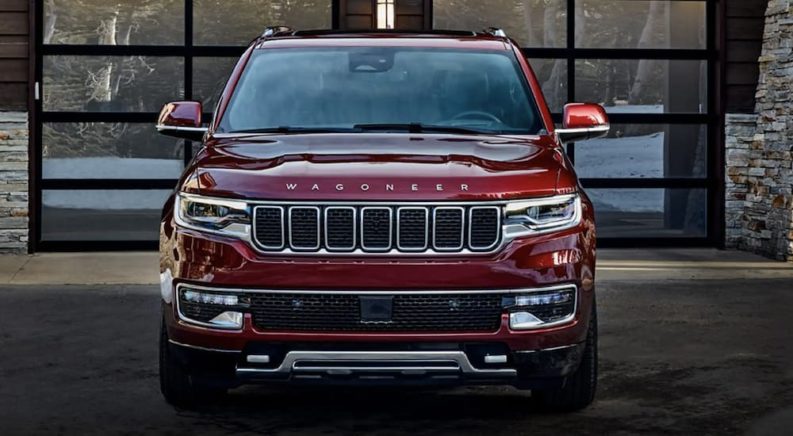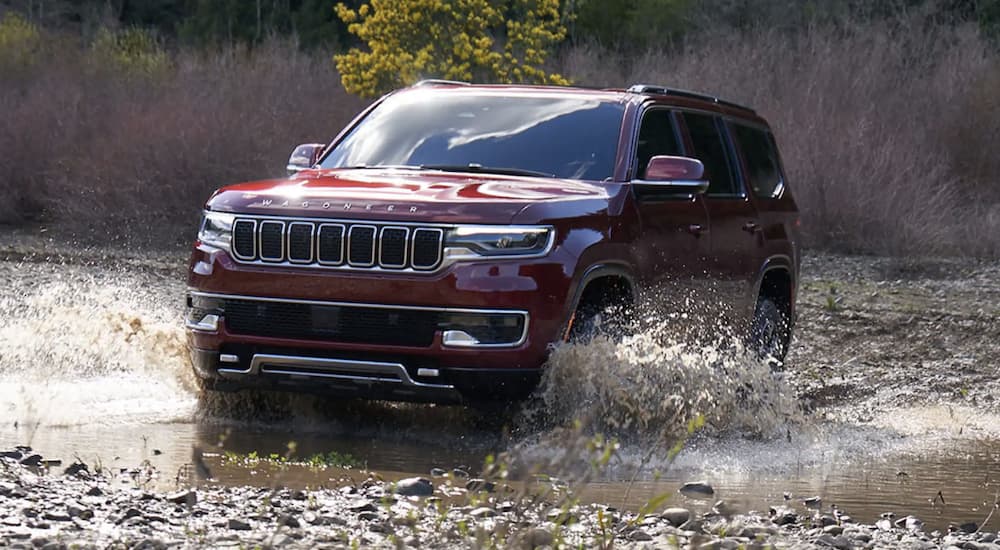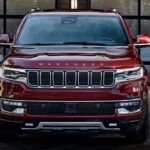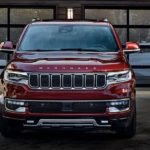If you’ve been out and about looking for a new vehicle, there’s a good chance you might have seen the new model at your local dealership: the Wagoneer. In fact, you might have even stopped at your Wagoneer dealer to look at it and thought to yourself, “now there’s a vehicle with some real presence.” The 2022 Wagoneer carries a domineering personality and harkens back to the days when SUVs were large and in charge.
However, the Wagoneer is not a newly formed concept or creation. Believe it or not, the Wagoneer has a long-stretching lineage that started with the vehicle’s initial release in 1963. This model has seen some ups, some downs, and a long absence from the market, but that hasn’t managed to stop it from being a powerhouse in the industry. Resurrected from a long hiatus that started back in the early ’90s, the 2022 Wagoneer is better than ever before. Don’t believe us? Let’s take a look at the Wagoneer’s journey and see how much this SUV has changed from its humble beginnings to its current luxury status.
1963: Humble Beginnings
The mid-1960s is often associated with the birth of the muscle car and larger-than-average vehicles powered by monstrous powertrains. The Wagoneer made its debut in this environment. The first generation of the Wagoneer had an appearance that was more akin to a station wagon than an SUV, but its uniquely styled front end was one of its most noticeable features that still caught the eye.
Considering what four-wheel drive and off-roading vehicles are equipped with today, the Wagoneers’ arsenal almost seems to be limited. A 3.8L inline-six-cylinder engine produced 210 lb-ft of torque and had a horsepower rating of 140. A far cry from the pony cars that would define the decade in question, the Wagoneer was almost the complete opposite. While it wasn’t going to be breaking the sound barrier, it was rugged, reliable, and could travel off the beaten path whenever circumstances called for it. This trend of being dependable and offering drivers a chance to go off-roading was a hit with consumers, as this version of the Wagoneer would remain in production until its discontinuation in 1991.
1984: A Second Generation Takes Flight
One practice that seemed commonplace in the 1980s was the unrequired reinvention of popular products. While the most popular of these was the “new coke,” the Wagoneer found a new incarnation of itself, being launched for the 1984 model year. While the older model of the vehicle would still be sold due to its immense popularity, the Jeep Wagoneer XJ hit the market. (Not to be confused with the previous generation known as SJ, or ‘Senior Jeep.’) It’s easy to look back and think, “if the Wagoneer wasn’t broken, why fix it?” It’s entirely possible that many executives were thinking the same thing as the XJ ceased production in 1990. So, what was so different about this second incarnation?
The significant alteration with the XJ line was a new body style. Known as a “unibody,” this involved fusing the vehicle’s frame directly to the floorplan. This action provided more durability and slightly higher ground clearance. A noble concept in theory, but one that gave the Wagoneer an aesthetic that was more in line with an upscale version of the Jeep Cherokee and not the individual identity that vehicle had established for itself during its first incarnation.
When it came to the Wagoneers powertrain, it had been slightly slimmed down. A 2.5L four-cylinder was the standard offering, allowing for a horsepower rating of 110. This was updated for the 1987 model year with an improved rating of 117 horsepower, thanks to the transition from a carburetor to fuel injection. With the eventual discontinuation of the XJ line in 1990, and the SJ in 1991, there would be a brief lapse in the cohesive timeline of the Wagoneer, but it wouldn’t be too long before a return would take place.
1993: Third Time’s the Charm (Sort Of)
When the Wagoneer first made its debut, it was certainly way ahead of its time in predicting the future of the SUV. Three decades later, the brand would again be ahead of the curve in equipping the SUV with the various luxuries and amenities that would be popular years later. It was also around this time that Jeep’s rivals, such as the GMC Jimmy, Chevy Blazer, and Ford Explorer, were becoming increasingly popular, and the competition was beginning to heat up.
While the Wagoneer had returned after a short absence, it was confined to a trim level on the Jeep Grand Cherokee. Now renamed the Grand Wagoneer, the smaller powertrains from previous years had been all but abandoned. In their place was a sizable and intimidating 5.2L V8 capable of generating an impressive 220 horsepower and 285 lb-ft of torque. While the powertrain was certainly new, the Grand Wagoneer saw it return to its earliest inception as far as style was concerned. The wood-paneled trim on the outside was a welcomed throwback to the good old days of the Wagoneer, making a notable impression on the public.
However, this third incarnation wouldn’t last, as it was only available for one year before being discontinued. Perhaps it was too ahead of time, or the circumstances for a return would just have to be better.
2022: Rebirth of a True Classic
It’s been said that you can’t reinvent the wheel. This might be the case, but you can undoubtedly reintroduce it to a new generation of drivers who know a good thing when they see it. Introduced for the 2022 model year, the Wagoneer made a return worthy of the gladiator it truly is. Equipped with a 5.7L Hemi V8 that generates a monstrous horsepower rating of 392 and the ability to generate 404 lb-ft of torque, this isn’t the Wagoneer of the past. And with a maximum towing capacity of 10,000 lbs, you might be glad it isn’t.
One of the best attributes of the Waggoner’s newest incarnation is that its design manages to carry on one of the main attributes that made the original so revered. The Wagoneer has a unique look that makes it stand out from the crowd of other SUVs in its class. This is more than just power and storage; the newest incarnation of the Wagoneer has been integrated with the newest forms of technology to its benefit. An adjustable air suspension accentuates the ground clearance of 3.6 inches, and multiple driving modes mean you’ll have the ability to tame any land and claim any terrain as your very own. That’s right; this model is well equipped to handle off-roading. So, pack up yourself and seven of your closest friends and go explore an area less traveled in comfort and style.
Where Does It Go From Here?
The future is always unwritten and littered with a variety of uncertainties. That being said, history always has a habit of repeating itself. As we’ve seen, the Wagoneer has always had one eye ahead of the curve. While it has seen some low points, it definitely keeps on going, and it is now reinvented for a new generation of drivers. With impressive capability and comfort features to make you want to spend time driving it, the new Wagoneer is taking the market by storm. Will it last? Only time will tell, but we think there’s a good chance we will see this model on dealer lots for a while yet.





